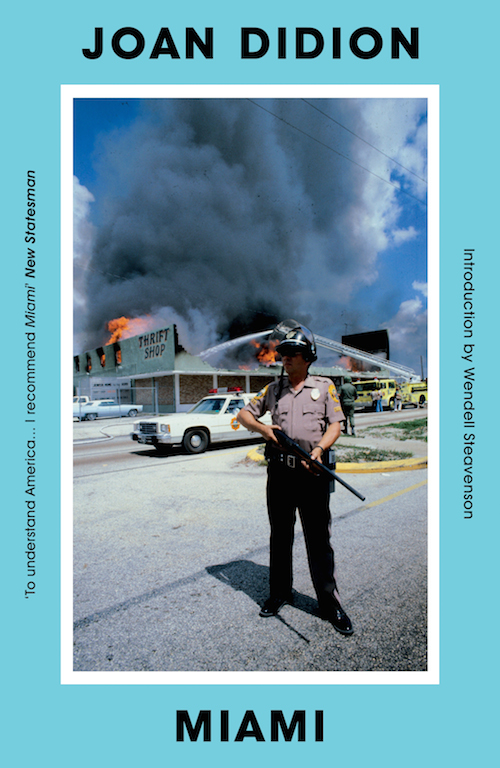
Joan Didion is associated with no place more than southern California. Yet she also spent two major stretches of her life in New York, one from the mid-nineteen-fifties to the mid-nineteen-sixties, and another from 1988 until her death this past December. She made that second move the year after publishing Miami, an ostensible examination of the titular South Floridian metropolis mainly, she later admitted, “about what I think is wrong with Washington.” Yet Miami is also about a specific Miami, and in a sense the dominant one: Cuban Miami, whose inhabitants constituted 56 percent of the total population by the time Didion began visiting the city in the mid-eighties. “There had come to exist in South Florida two parallel cultures,” she writes, “separate but not exactly equal, a key distinction being that only one of the two, the Cuban, exhibited even a remote interest in the activities of the other.”
What surprises me about this is the implied existence of a non-Cuban Miami. Though I still haven’t been there, I’ve long imagined the city’s overall cultural formation as even more dependent on Cuba than that of Los Angeles has been on Mexico. Of course, even 35 years ago a major American city’s being influenced by a large number of Latin American immigrants wasn’t a novelty. Miami’s uniqueness manifests to Didion linguistically: “In, say, Los Angeles, Spanish remained a language only barely registered by the Anglo population, part of the ambient noise, the language spoken by the people who worked in the car wash and came to trim the trees and cleared the tables in restaurants. In Miami Spanish was spoken by the people who ate in the restaurants, the people who owned the cars and the trees, which made, on the socioauditory scale, a considerable difference.”
Hence the way I occasionally heard Spanish described by my fellow students of the language back in Los Angeles: there an advantage, but in Miami a necessity. Though evidently without Spanish herself, Didion was sensitive enough to the undercurrents of power to pick up on what its use revealed about the city. (The Hispanophone David Rieff published his own Going to Miami in 1988, followed by Los Angeles: Capital of the Third World in 1991, but neither book remains prominent in the literature of those cities.) She engages Cuban Miami through its English-speakers, as when “on one of the first evenings I spent in Miami I sat at midnight over carne con papas in an art-filled condominium in one of the Arquitectonica buildings on Brickell Avenue and listened to several exiles talk about the relationship of what was said in Washington to what was done in Miami.”
Read the whole thing at Substack.